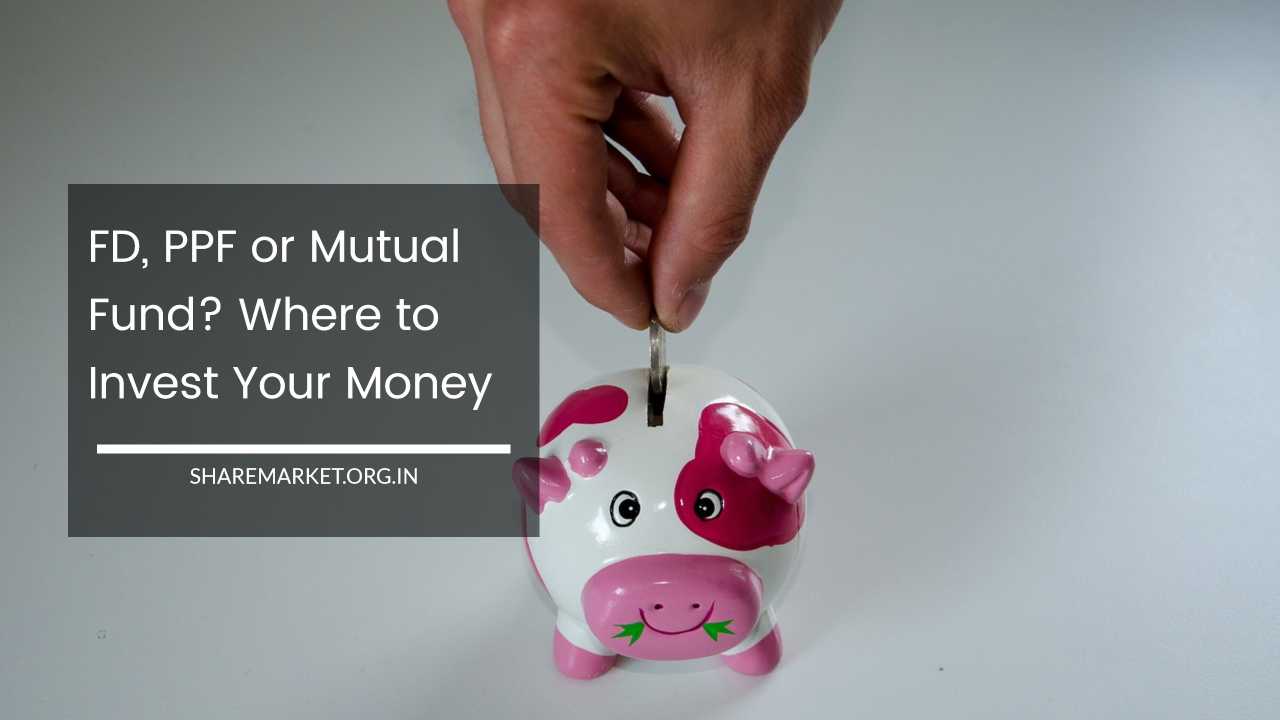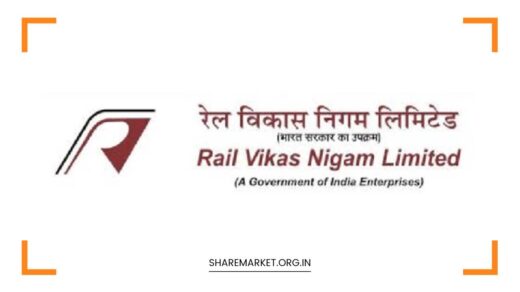FD, PPF or Mutual Fund? Where to Invest Your Money

Where to Invest Your Money
FD, PPF, or Mutual Fund? Where to Invest Your Money
India’s burgeoning middle class is increasingly seeking avenues to grow their savings. With a plethora of investment options available, choosing the right one can be overwhelming.
In this comprehensive guide, we will explore three popular choices—Fixed Deposits (FDs), Public Provident Fund (PPF), and Mutual Funds—to help you make an informed decision based on your unique financial situation and goals.
Understanding Your Financial Goals
Before diving into the specifics of each investment option, it’s essential to clearly define your financial objectives. Your goals will significantly influence the most suitable investment vehicle. Consider the following categories based on your investment horizon:
- Short-Term Goals (1-3 years): If you aim to achieve a goal within this timeframe, such as saving for a vacation or a new car, your priorities should be high liquidity and minimal risk.
- Medium-Term Goals (3-5 years): For goals that fall within this range, like purchasing a house or funding a child’s education, you need to strike a balance between risk and return.
- Long-Term Goals (5+ years): For longer horizons, such as retirement planning or long-term wealth accumulation, investing in growth-oriented assets becomes crucial to potentially maximize returns.
Fixed Deposits (FDs): The Safe Haven
Fixed Deposits are a traditional and widely trusted investment choice, known for their safety and predictable returns. Offered by banks and other financial institutions, FDs come with various interest rates and tenures.
Key Features of FDs
- Guaranteed Returns: The interest rate on an FD is fixed at the time of deposit, providing a guaranteed return on your principal amount.
- Liquidity: Although FDs offer the possibility of premature withdrawal, it often incurs a penalty or reduced interest rates.
- Tax Implications: Interest earned on FDs is taxable under the Income Tax Act, which might impact your overall returns depending on your tax slab.
- Risk Profile: FDs are considered low-risk investments, making them a secure option for preserving capital.
When to Consider FDs
- Short-Term Goals with Low-Risk Appetite: Ideal for goals within 1-3 years where safety and guaranteed returns are prioritized.
- Emergency Fund: Suitable for creating an emergency fund due to its low-risk nature and relatively high liquidity compared to other long-term investments.
- Senior Citizens Seeking Regular Income: Often favored by retirees looking for a steady income stream with minimal risk.
When FDs Might Not Be Ideal
- Long-Term Wealth Creation: For extended investment periods, FDs may offer relatively lower returns compared to other growth-oriented investment options.
- Beating Inflation: Over long durations, FDs may not keep pace with inflation, which can erode the purchasing power of your returns.
Public Provident Fund (PPF): The Tax-Saving Wonder
The Public Provident Fund (PPF) is a government-backed scheme offering tax benefits and long-term returns. It’s particularly popular among individuals looking for a secure investment with tax-saving advantages.
Key Features of PPF
- Tax Benefits: Contributions to PPF qualify for deductions under Section 80C of the Income Tax Act. Additionally, the interest earned and the maturity amount are tax-free.
- Long-Term Commitment: PPF has a mandatory lock-in period of 15 years, which can be extended in blocks of 5 years.
- Interest Rates: The interest rate is compounded annually and is determined by the government, ensuring a fixed return over the investment period.
- Risk Profile: With the backing of the Indian government, PPF is considered a very low-risk investment.
When to Consider PPF
- Long-Term Wealth Creation with Tax Savings: Suitable for investors looking to build a corpus over the long term while enjoying tax benefits.
- Retirement Corpus: A robust option for retirement planning due to its long tenure and tax-free maturity amount.
- Secure Investment Option: Ideal for conservative investors seeking a low-risk investment with guaranteed returns.
When PPF Might Not Be Ideal
- Short-Term Goals: The 15-year lock-in period makes PPF unsuitable for short-term goals or emergency needs.
- High Liquidity Needs: If you require easy access to your money, PPF’s lock-in period may not meet your needs.
Mutual Funds: The Growth Engine
Mutual Funds aggregate money from multiple investors to invest in a diversified portfolio of assets, including stocks, bonds, and other securities. They offer the potential for higher returns compared to FDs and PPFs, albeit with associated market risks.
Key Features of Mutual Funds
- Diversification: By investing in a variety of assets, mutual funds reduce the risk associated with any single investment.
- Professional Management: Fund managers handle investment decisions, aiming to optimize returns based on market conditions.
- Variety of Funds: Mutual Funds come in different types, including equity, debt, hybrid, and index funds, catering to various risk profiles and investment goals.
- Tax Implications: Capital gains from mutual funds are subject to tax. Short-term capital gains are taxed differently from long-term capital gains, depending on the holding period and fund type.
When to Consider Mutual Funds
- Long-Term Wealth Creation: Ideal for those aiming to build wealth over an extended period and are willing to tolerate market fluctuations.
- Higher Risk Appetite: Suitable for investors comfortable with market risk and seeking potentially higher returns through equity or hybrid funds.
- Power of Compounding: Mutual Funds offer opportunities for compounding returns, particularly through systematic investment plans (SIPs).
When Mutual Funds Might Not Be Ideal
- Short-Term Goals: Due to market volatility, Mutual Funds may not be suitable for goals requiring certainty within a short timeframe.
- Guaranteed Returns: If you prefer fixed returns, Mutual Funds may not be appropriate since they are subject to market risks.
Choosing the Right Investment
Selecting between FD, PPF, and Mutual Funds depends on your financial goals, risk tolerance, and investment horizon. Here’s a simplified guide:
- Risk-Averse Investors with Short-Term Goals: Fixed Deposits are a fitting choice due to their low-risk profile and guaranteed returns.
- Risk-Averse Investors with Long-Term Goals: Public Provident Fund is ideal for those seeking a secure investment with tax benefits and long-term growth potential.
- Investors Seeking Higher Returns with Moderate Risk: Mutual Funds are suitable for those looking for diversified investment opportunities and are comfortable with market risks.
Additional Considerations
- Inflation: Evaluate the impact of inflation on your investment returns. While PPF and some Mutual Funds may offer returns that outpace inflation over the long term, FDs might not be as effective in maintaining purchasing power.
- Tax Implications: Understand the tax consequences of each investment option. Tax-saving instruments like PPF provide immediate benefits, while Mutual Funds and FDs have varying tax treatments based on gains and interest.
- Liquidity: Consider how easily you can access your funds. FDs offer more liquidity than PPF, whereas Mutual Funds provide varying degrees of liquidity depending on the fund type and market conditions.
- Financial Advisor: Consulting a financial advisor can help tailor an investment strategy that aligns with your personal goals, risk tolerance, and financial situation.
Final Remarks
Investing is a personal decision that should be guided by careful evaluation of your financial objectives, risk tolerance, and time horizon.
Whether you choose Fixed Deposits, the Public Provident Fund, or Mutual Funds, understanding each option’s unique features and implications is crucial to making informed decisions. Remember, investing involves risks, and past performance does not guarantee future results.
For tailored advice, consider consulting a financial advisor who can provide insights and recommendations specific to your financial situation. With a thoughtful approach to investment, you can work towards achieving your financial goals effectively and efficiently.
Disclaimer: This article is intended for informational purposes only and should not be construed as financial advice. Always conduct thorough research or seek professional guidance before making any investment decisions.

















